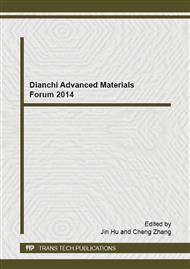p.176
p.180
p.185
p.190
p.196
p.200
p.205
p.209
p.213
Densification Mechanism of Antimony-Doped Tin Oxide Ceramics by Spark Plasma Sintering
Abstract:
SnO2 ceramics were synthesized by SPS. Phase compositions and microstructures are examined by XRD, SEM and EDS, respectively. Sb2O3 used in our research were beneficial to lower the sintering temperature and promote the densification of SnO2 ceramics. The SEM results show a homogeneous microstructure is approached consistent with the density measurement at 850-1000 °C. The XRD show all antimony ions came into the lattice of SnO2 to substitute for tin ions when the content of Sb2O3 are 0.1-2.5 mol%. The grain boundary are no SnO and Sb2O3, only SnO2. The mechanism of SPS sintering process is the local high temperature to produce the abnormal growth of the grain, and evaporation-condensation; and solid solution of Sb3+ go into the SnO2 lattice produce oxygen vacancy to promote densification
Info:
Periodical:
Pages:
196-199
Citation:
Online since:
November 2014
Authors:
Price:
Сopyright:
© 2014 Trans Tech Publications Ltd. All Rights Reserved
Share:
Citation:


